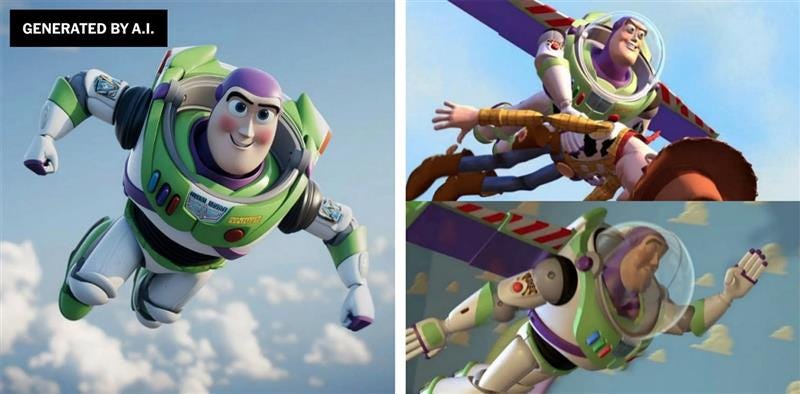Copyright or Copywrong? When Disney and Universal sued Midjourney over AI-generated characters
When technology learns to imitate imagination, who owns the result? The Midjourney lawsuit forces us to confront what originality, authorship, and ownership truly mean in the age of AI
In June 2024, Disney and Universal filed a major lawsuit against Midjourney, an artificial intelligence (AI) company best known for its image-generation tool. The complaint, lodged in California, accuses the firm of copyright infringement by enabling users to generate highly recognisable images of characters such as Darth Vader, Yoda, Elsa and Shrek. At the centre of the lawsuit is a growing tension: the rapid development of generative AI and the question of who owns the rights to what it produces.
Midjourney, a small San Francisco-based company with just 11 employees, operates one of the world’s most popular text-to-image platforms. It had an estimated revenue of 300 million US dollars in 2023 and recently launched a new video-generation tool, signalling its growing influence. According to the lawsuit, Midjourney's platform allows users to produce unauthorised images of copyrighted characters simply by entering prompts like "Buzz Lightyear screencap." These images often appear so accurate that they are indistinguishable from original content produced by the studios.
Disney and Universal argue that this act goes beyond inspiration. They have called Midjourney a "bottomless pit of plagiarism," contending that it undermines the economic foundation of the creative industries. The studios claim that whether an infringing image is made with a camera or an algorithm, it is still a violation of copyright. Their legal team has likened Midjourney to a vendor of counterfeit merchandise, stating that its actions threaten to "upend the bedrock incentives of copyright law."
The legal basis for the case revolves around the concept of "fair use" under Section 107 of the U.S. Copyright Act. Courts use a four-factor test to determine whether unauthorised use can be excused. This includes evaluating the purpose of the use, the nature of the original work, the amount used, and the effect on the market value. In recent hearings involving other AI firms, judges have indicated that market impact might carry the most weight. However, proving direct harm to specific works remains difficult.
The complaint from Disney and Universal avoids directly challenging the act of training AI models on copyrighted data. Instead, it focuses on the outputs, images that clearly reference protected characters. This distinction may reflect the studios’ own interest in continuing to use AI to cut production costs while defending their core assets. AI already plays a growing role in Hollywood, from voice alteration and de-ageing effects to background generation in films. Recent Oscar nominees such as Emilia Perez used AI to edit the actors' performances.
While the business opened itself up to the use of AI, writers and artists raised the alarm. Hollywood actors and writers protested in 2023 and staged a strike to demand protection against AI-generated work that could replace theirs. The lawsuit has been widely welcomed by creative professionals and unions who see it as a long-overdue move. As one union representative put it, “Better late than never.”
While Midjourney has not responded publicly, its founder, David Holz, has previously acknowledged that the platform was trained using vast amounts of scraped internet data, with little regard for copyright boundaries. In his words, there is currently “no way to trace a picture on the internet to an owner,” raising concerns surrounding the transparency and legality of training practices.
AI companies argue there is no market currently for training data licences. Such a position becomes more and more unsustainable. News media such as The New York Times and the Associated Press have already entered into license deals with AI developers, proof that there is an emerging market. Even the U.S. Copyright Office has asked developers of AI to buy licences where feasible, maintaining the expectation of responsibility.
Why this case matters
The 110-page lawsuit includes numerous visual exhibits comparing Midjourney-generated images with copyrighted characters owned by Disney and Universal, a few of which are shown below.
This case is not the first time AI has collided with copyright, but it is the first instance where major Hollywood studios have initiated action. Other cases involving authors and visual artists are ongoing, but Disney and Universal bring far greater resources and public visibility. The potential damages are significant. The lawsuit asks for statutory damages of up to 150,000 US dollars per infringing work, and it seeks an injunction to halt Midjourney’s video service unless it includes copyright safeguards.
There is also a geopolitical angle. In the United Kingdom, the government's proposal to let AI companies access copyrighted material unless authors opt them out has been met with bitter opposition. Global giants such as Paul McCartney have been among them. In the United States, the proposed AI policy by former President Trump includes a controversial 10-year ban on state-level regulation of AI, which would drastically limit future enforcement of copyright protection.
What is ultimately at stake is more than just a few digital images. This lawsuit is a bellwether for how society will value creative labour in an age of artificial intelligence. If successful, the case could force AI firms to retrain their models using licensed content, paving the way for ethical innovation. If the court rules in Midjourney’s favour, it may entrench a model of development that relies on vast, unpaid borrowing from human creators.
In either outcome, the case marks a decisive moment for intellectual property law. As AI continues to blur the line between human authorship and algorithmic reproduction, courts, creators and companies will need to decide whose imagination is truly protected, and at what cost.




